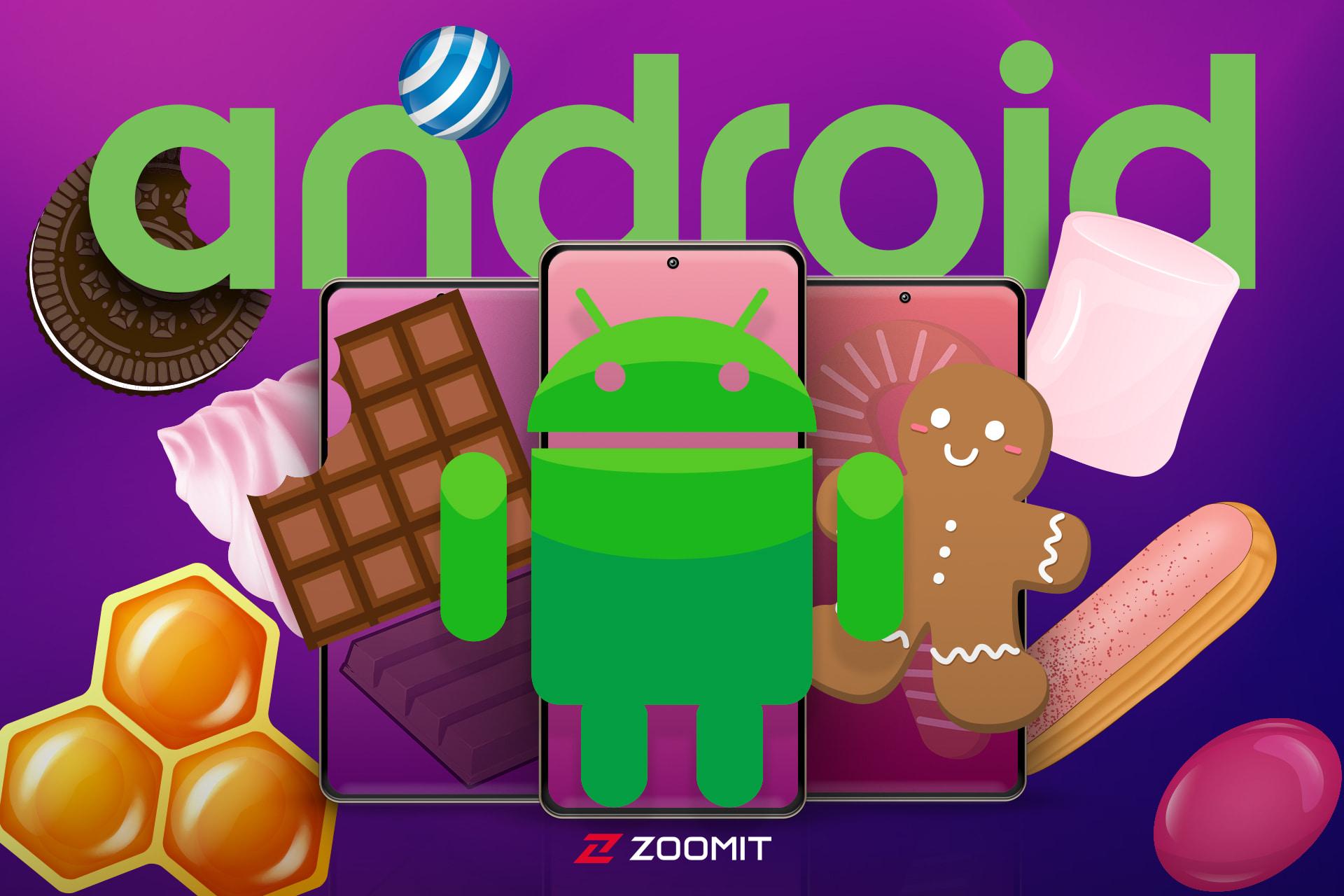Technology
The biography of Sundar Pichai, the innovative leader of Google and Alphabet
Published
3 weeks agoon


The biography of Sundar Pichai, the innovative leader of Google and Alphabet
Sundar Pichai, when he set foot on American soil at the age of 23, thought of all the dreams of elite Indian students: he had finally arrived in the land of Silicon Valley, the ideal world of engineers, managers, and successful technology entrepreneurs; But the difference between his old and new society soon took on a different color.
This article was updated on the occasion of Sundar Pichai’s birthday on June 21, 1403.
It wasn’t just that the country, dubbed the Land of Immigrants, was even more advanced than the pictures in magazines and the dreams of its friends; Rather, the first thing that surprised him was the very high cost of living and prices that could not be compared to his native land.
At that time, Pichai never thought that 24 years later he would hold the record for the highest salary among CEOs of American companies. He did not even guess that one day he will become a role model for the youth of India. Join us to review the eventful life of Sundar Pichai, the longest-serving CEO of Google and Alphabet.
Starting point
Sundar Pichai was born on June 10, 1972, in Mudarai, Tamil Nadu, India, in an educated and intellectual family that was financially in the middle class of society. Back then, “middle class” in India meant living in a small two-bedroom apartment, without the basic amenities such as a television and even a simple refrigerator that are taken for granted today.
 Old building of IIT Kharagpur
Old building of IIT Kharagpur
Sundar’s mother Lakshmi was a stenographer or stenographer before giving up her career for the sake of her children. His father, Regonata, was an electronic engineer who worked for an English company that manufactures electrical components called General Electric Company (GEC). Father’s stories about the factory and the events that happened there, the tools that were produced, and the obstacles that existed in the industrial world, slowly shaped Sundar’s mentality of the future world.
Sundar Pichai’s first encounter with electronics was when his family bought a phone
Despite all the restrictions, Sundar’s parents placed great emphasis on the education of their two children and encouraged them to pursue their interests and talents seriously.
Sundar’s first direct encounter with electronics came when the family managed to buy a telephone after a long time. This process was too exciting for 12-year-old Sundar and he spent hours checking the phone’s performance. While watching his enthusiasm, his parents noticed another interesting thing: how quickly Sundar memorized all the phone numbers after just hearing them once. The power of Pichai’s memory made his colleagues admire him years later.
Sundar Pichai had no experience of driving private cars until he was a teenager
The movement of middle-class people in India was limited to public transport and Pichai’s family was no exception. Sundar had no experience of driving private cars until he was a teenager, and he was not upset about it, because lessons, sports, and childhood adventures were more interesting activities for him.
Sundar completed his high school at Jawaharlal Vidyalaya School in Chennai. Later, his teachers would mention his inquisitive nature and his willingness to delve deeply into subjects that piqued his interest in any way.
 Sundar Pichai at IIT Kharagpur Faculty Hostel
Sundar Pichai at IIT Kharagpur Faculty Hostel
One of the high school teachers recognized Sundar’s potential and tried to teach him critical thinking, a methodical approach to solving problems, and striving for excellence. With the support of this teacher, Sundar learned the importance of perseverance and flexibility in life, and his personality and professional ethics were founded from here.
Pichai’s drive to succeed in academia led him to the Indian Institute of Technology (IIT) Kharagpur; where he obtained his degree in metallurgical engineering and was selected as the top student of the year. His brilliant academic record and distinctive approach to problem solving earned him a scholarship to Stanford University.
 Old building of IIT Kharagpur
Old building of IIT Kharagpur
Pichai later said in an interview with Bloomberg about his childhood and adolescence:
I grew up in an average family and understood life through the gradual introduction of gadgets into the home. I remember how happy we were when we bought a TV and could watch sports. At that time I used to go to school on a simple bicycle without brakes and the whole way was uphill. Later I got a bike with brakes and I was so excited that I can’t describe it. The difference between the two was striking, that’s why I never considered technology as an obvious part of all people’s lives, but I thought about how technology can make human life better.
Many families like ours have experienced the digital divide and inequality of access to technology in developing societies. This flow makes me more committed to the development of global solutions for connections and internet communication.
As a teenager, Pichai loved football, cricket (India’s most popular sport), and also chess, and wrote his first computer program for playing chess.
 Sundar Pichai at the IIT graduation ceremony
Sundar Pichai at the IIT graduation ceremony
Immigration to America
Pichai received a scholarship to Stanford University, but his efforts to find a loan to get to America were unsuccessful. His family had to give him all their savings to buy the ticket for this trip; An amount that was more than Sundar’s father’s income for a year.
Accordingly, Sundar Pichai arrived in the United States in 1995 at the age of 23 and began his master’s studies in the field of materials science and engineering. As a student, he focused on the building blocks of computers, such as density, molecular mechanics, semiconductors, and most importantly, materials that might make good semiconductors.
Pichai’s family’s entire savings were used to buy his ticket to America
The Guardian later wrote that Pichai’s technical knowledge was very important to Google. Although Sergey Brin and Larry Page, the founders of Google, studied computer engineering, they were closer to the software orientation and Pichai understood the hardware well.
 Pichai’s student days at Stanford University
Pichai’s student days at Stanford University
Pichai was going to get his PhD from Stanford University, but then he gave up and after getting his master’s degree, he went to Silicon Valley to try his luck for a career at a prestigious company.
He later said: “I think I disappointed my father by abandoning my doctorate.” But there were many issues. First, I went to Silicon Valley for Silicon! This was where semiconductors were manufactured and I wanted to put what I had learned into practice. Of course, my financial situation was not unaffected by this decision. “I had to find a suitable job.”
Pichai worked throughout his studies and sent some of his earnings to his family in India.
Start of engineering activities
Sundar Pichai says about entering Silicon Valley:
I have always loved the development of technology, from childhood to college. I read all the publications that wrote about the current happenings in the world of technology. It was important to me what was happening in Silicon Valley and I wanted to be a part of these events myself.
After entering the land of his dreams, Pichai was first employed as a materials engineer and consulting manager at McKinsey and then worked for a while at the semiconductor company Applied Materials.
After that, Pichai realized that in order to succeed in Silicon Valley, in addition to engineering knowledge, he also had to learn business management; For this reason, in 2002, he returned to the university again and started studying at the MBA degree at the Wharton School of the University of Pennsylvania. At Wharton, he received the title of Siebel Scholar and Palmer Scholar.
Recruitment at Google
In April 2004, Pichai participated in a Google job interview. This day coincided exactly with the day that Gmail service was introduced to the world. Sundar, like most people, thought the idea of a free email service was Google’s April fool.
Pichai successfully passed the interview and started working in this company as the product manager of the “Google Search Bar” department. The goal of the project was to make it easier for users to access the Google search engine, without having to open the web page every time. Pichai’s success in delivering the final results paved the way for his next two consecutive projects: Google Gears and Google Pack.
 Larry Page and Sergey Brin, the co-founders of Google and Eric Schmidt, the former CEO of this company
Larry Page and Sergey Brin, the co-founders of Google and Eric Schmidt, the former CEO of this company
Google was a six-year-old company in 2004, setting its sights on developing “search-centric” products. At that time, Google Chrome didn’t exist yet, and one of Pichai’s bold actions was to propose a browser that could replace Microsoft’s Internet Explorer. Eric Schmidt, CEO of Google at the time, did not agree with this; Because he thought that Google was still too young to enter the web browser market.
Eric Schmidt disagreed with Pichai’s idea of developing the Chrome browser
In 2006, Microsoft introduced Bing as the default Internet Explorer search engine, and it was here that the importance of Pichai’s earlier ideas became clear to the company’s founders. This competition was an inevitable competition, and if Google did not think of a plan for it, Microsoft would swallow all of Google’s achievements.
Google’s board of directors appointed a team of experts led by Sundar Pichai to develop a new browser called Google Chrome. In 2008, Pichai was promoted to the position of vice president of Google, and Chrome was introduced to the world in the same year. Eric Schmidt later admitted that although he was an early opponent of the development of the new browser, he was very excited when he saw Pichai’s first design.
 Sundar Pichai (right) and Andy Rubin, creator of the Android operating system. Robin was removed from Google’s board in 2020 due to ethical misconduct.
Sundar Pichai (right) and Andy Rubin, creator of the Android operating system. Robin was removed from Google’s board in 2020 due to ethical misconduct.
Chrome quickly gained acceptance among users that few expected. A few years later, there were few people who did not prefer this browser to its Microsoft counterpart. A year after the introduction of the browser, Pichai also introduced the Chrome operating system, which, of course, remained at the level of Chromebook educational laptops, but made Pichai one of the main members of the Google company.
Pichai remained as CEO until 2012 and was responsible for the development of Chrome and its applications. After a decade of fruitful and profitable activity, another turning point in his professional life came, which caught the eye of all technology activists: Pichai was recognized as the most influential man of the year in the world of technology and as Andy Rubin, the creator of the Android operating system, Responsible for managing and monitoring all Android products.
 Android One presentation ceremony
Android One presentation ceremony
Android upgrade entered a new phase with the introduction of Android 1.0. At the same time, Sundar Pichai was the senior supervisor of Google Maps, Google Drive, and Gmail projects.
Appointed CEO of Google
Larry Page and Sergey Brin founded Alphabet Holding in 2015 and brought Google and other projects under this group. The two co-founders left Google to lean on Alphabet’s board of directors, and the best and only option that calmed their minds on the overall management of Google was Sundar Pichai.
The important characteristic of Pichai’s personality as a product manager was that, although he always had a clear vision of his projects, he also sought the opinions of his colleagues at every stage and moved forward with collective agreement. He stressed that his team achieved the best possible results, but at the same time, he was careful not to harm other teams.
When Pichai became CEO of Google, Twitter sought him out
On the other hand, Google once chose Sundar Pichai as the company’s new CEO, and Twitter was also looking to attract him. Pichai has proven to be an emerging leader and key manager. Larry Page has said that he sees no one as close to his ideas as Sundar Pichai. He also said:
Sundar has an uncanny knack for developing products that are both technically excellent and easy to work with. He likes big steps and risks.
One of Pichai’s professors at IIT School of India said about this appointment:
I knew he would reach such a position. I had seen this day. When he became vice president of Google, I told everyone that this is a start, he will go straight to the top.
Just within the first week that Pichai became CEO of Google, his Wikipedia page was edited 350 times. Pichai was against spreading rumors about his life in India and exaggerating his personality, and in one of the podcasts of Stanford University, he expressed his dissatisfaction with people who tried to make his childhood and adolescence look different from reality.
Pichai began the conversation with the podcast host by saying, “I advise you to never read what they write about your life!” He explained that, for example, he had never been the captain of the high school cricket team, although he had always wanted to be; Or it is not true that he studied at home instead of school. He said:
There is no reason to exaggerate. Our life as a child was different from that of an adult. As an adult, we saw the rapid changes in technology, but as a child, we only waited 5 years before we could get a phone line and device. Before that, every time I wanted to get the results of my grandparents’ test, I walked a long way to the laboratory and they said that the answer was not ready yet and I had to walk the same way in an hour and come back. But then I saw that the phone easily changed everything. We could call and find out if the test answer is ready or not. It felt great.
When people came to our house to call their acquaintances, I could clearly see how the social relations were strengthened. So I have always believed that technology can bring profound changes. If I have a duty, it is to facilitate access to new technologies for the people of the world as much as I can.
What made me stay at Google all these years was that our products worked everywhere. It didn’t matter if you were a child in an Indonesian village or a student of the best university in the world. Google Maps, Gmail, and YouTube work the same for everyone. At Google, we were all thinking about scalability. To be able to communicate with all people and make technology available to them. This is what I wanted to do in my life.
Google became a fully organized company under the management of Sundar Pichai. Android developed alongside iOS and took root in the smartphone industry. Google’s search engine algorithms continued to improve, and the company made its way into the fields of machine learning, augmented reality, and e-commerce.
 The presentation ceremony of the first Google Pixel in 2016
The presentation ceremony of the first Google Pixel in 2016
Pichai played a key role in the development of Google’s cloud computing services. Many Silicon Valley experts thought he was putting too much energy into the infrastructure of artificial intelligence services and that products like Google Assistant would soon expire. But again, the value of Pichai’s foresight in this field became clear several years later: when the artificial intelligence renaissance took the technology market by storm.
As Pichai’s first major achievement, Chrome became the undisputed king of the crowded web browser market, but Pichai’s trajectory continued to be unpredictable.
“He recruited, mentored and retained a great team,” says former Google product manager Chris Beckman. Sundar Pichai’s team was made up of the best people and achieved a reputation similar to that of Google’s search engine engineering team.
Alphabet management and endless challenges
In 2019, Larry Page and Sergey Brin stepped down as CEOs of Alphabet and announced that Google and Alphabet companies do not need separate CEOs, but want a single powerful head.
Sundar Pichai was a person who built effective teams, oversaw product strategies and execution processes, and collaborated with other internal groups and external companies. He also identified the needs of the market in time and fought for short-term challenges and long-term goals. The founders of Google knew very well that they would not find a better choice than Pichai to lead the entire Alphabet group.
Alphabet has been under the microscope of US regulatory agencies for a long time since Pichai’s CEO
Managing Alphabet was a new and tense chapter in Pichai’s career, as Alphabet, from its inception, supported diverse and sometimes unknown businesses, many of which are still obscure to most people. On the other hand, this company was under the scrutiny of the American government and the European Union.
Pichai focused primarily on investing in and developing self-driving cars, biodiversity, and sustainable technologies. Then he adjusted the company’s revenue generation and profitability strategies and expanded the artificial intelligence department at the same time. According to Forbes, at the end of 2019, with a total income and bonus of 280.6 million dollars, he was ranked first in the list of the highest-paid executives of American companies.
 In 2018, Sundar Pichai explained the privacy policies of Google users in the Senate. Facebook CEO Mark Zuckerberg and Twitter CEO Jack Dorsey were also invited to this meeting.
In 2018, Sundar Pichai explained the privacy policies of Google users in the Senate. Facebook CEO Mark Zuckerberg and Twitter CEO Jack Dorsey were also invited to this meeting.
Pichai has been subpoenaed several times by US government officials to clarify Alphabet’s policies. Of course, earlier in 2018, the House of Representatives Judiciary Committee had criticized Sundar Pichai as the highest executive of Google regarding the company’s plans in the field of protecting user privacy and relations with China.
Two years later, Pichai appeared before Congress as an Alphabet executive to testify about corporate antitrust concerns. The flow of US government surveillance and complaints surrounding Google’s monopolistic tactics continues to this day.
The dismissal of one of Google’s artificial intelligence specialists was accompanied by the opposition of many employees of the company
In 2020, Google fired Timnit Gebro, one of its artificial intelligence specialists, and it faced many controversies and scandals. Gebro’s firing comes weeks after he was asked to retract a paper he published on the dangers of large language models. He also complained about the company’s treatment of minority employees.
 Google artificial intelligence researcher Timnit Gebro was fired from Google for an article about the dangers of artificial intelligence, as well as a complaint about discrimination among the company’s employees.
Google artificial intelligence researcher Timnit Gebro was fired from Google for an article about the dangers of artificial intelligence, as well as a complaint about discrimination among the company’s employees.
Many employees at the company were upset by Gebro’s firing, and Gebro said in an interview that Sundar Pichai and other Google executives had created a hostile work environment. Pichai finally apologized for the way the company treated Gabru and wrote to his employees:
I want to say how sorry I am for these events and I personally take all the responsibility of regaining your trust.
In 2020, Pichai was at the forefront of Google’s response to the Corona pandemic. Under his leadership, Google developed new strategies to help people find correct news and useful information about the coronavirus in their searches.
Like many other companies, Alphabet also put hiring more workers on its agenda at the beginning of the pandemic. Pichai hired about 37,000 new employees in the first 12 months of the outbreak but then ran into the same problem that most big tech companies face: The only way to offset the resulting costs was to lay off employees.
In January 2023, Alphabet had to lay off 12,000 employees, which was equivalent to 6% of the company’s global workforce. Pichai once again took responsibility for all the decisions that led to this situation.
The age of artificial intelligence
The continuation of the year 2023 was devoted to the development of artificial intelligence chatbots, and after that, Jumnai and dealing with their challenges. Sundar Pichai said in 2016 that Google will one day become the leading company in the field of artificial intelligence; But with competitors such as OpenAI and Microsoft, it will not be easy to make such a wish come true.
 OpenAI CEO Sam Altman and Alphabet CEO Sundar Pichai on the way to the White House to participate in the artificial intelligence oversight meeting with the presence of US Vice President Kamla Harris / May 4, 2023
OpenAI CEO Sam Altman and Alphabet CEO Sundar Pichai on the way to the White House to participate in the artificial intelligence oversight meeting with the presence of US Vice President Kamla Harris / May 4, 2023
Google announced that it will add its artificial intelligence to all Google Workspace tools, including search, Gmail, Docs, and other products.
One of the most important barriers that stand in the way of the development of large language models of Google and other artificial intelligence companies is the copyright issue of the resources that are used to train these models.
On the other hand, Google Jamna had other problems. In early 2024, Pichai was forced to put the instrument’s image-generating capability on hold after people complained that the model produced inaccurate historical photos of US presidents.
Pichai sent a memo to his staff confirming Jamnai’s objections. He also said to the users:
I know that some of Jamna’s answers offended people and contained gross biases. These issues cannot be justified and accepted. We have made a mistake.
The successive problems of Alphabet and Google raised the voices calling for the resignation of Sundar Pichai from the leadership of the company. However, Google’s AI plans have progressed to the point where Google I/O 2024 showcased Android’s AI-powered redesign to take Apple more seriously than ever.
Relations with India
Although Sundar Pichai is not the only Indian-born CEO of the world’s biggest tech companies, the people of this country consider him a true hero. Pichai has repeatedly reminded me that the two main priorities of his professional life are Google and India. Since he was appointed CEO of Google, he has traveled to his home country almost every year and met with government officials, students, and entrepreneurs.
 Sundar Pichai on a trip to India among children
Sundar Pichai on a trip to India among children
At his conferences in India, Pichai usually talks about India’s digital transformation and economic development, the importance of promoting entrepreneurship and the opportunities and challenges of technology, as well as ways to realize a digital workforce in the country.
In 2020, Pichai allocated a $10 billion fund to invest in India
In July 2020, Pichai announced the allocation of a 10 billion dollar fund to India, which will be invested in this country over 5 to 7 years under the supervision of Google’s digitalization fund.
In April 2021, following the consequences of the coronavirus epidemic, Pichai and Google employees donated a budget of 135 crore rupees to UNICEF and the Give India charity to purchase medical equipment, support high-risk communities, and help spread vital information to the people of India.
Read more: The Biography of Jim Simons
In 2022, Pichai received the prestigious Padma Bhushan Award from the Ambassador of India to America. He said in this ceremony:
India is a part of me and I take it with me wherever I go. I am deeply grateful to the people and government of India for this great honor and award. It is extremely valuable for me that the country in which I have deep roots and formed my identity, makes me proud like this.
Google, under the management of Sundar Pichai, has progressed more than during the chairmanship of its founders and has become one of the fiercest competitors in various technology markets. Larry Page once said that he and Pichai only need to look at each other to understand each other. But as Pichai himself said last year, we live in a rapidly changing and unstable world and we have no time to stop at our safe place.
Continuing Pichai’s success at Alphabet will also require tougher decisions and smarter competition with tech companies, especially in the AI space.
What will Pichai do to silence the whispers asking him to step down? Where will the efforts of people who work for “de-Google” campaigns? Sundar Pichai’s life story is intertwined with resilience in the face of adversity and determination for the best results, and it is unlikely that this story will end soon.


You may like
-

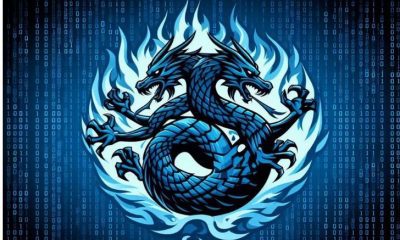


What is Kali Linux? Everything you need to know about this popular but mysterious distribution
-

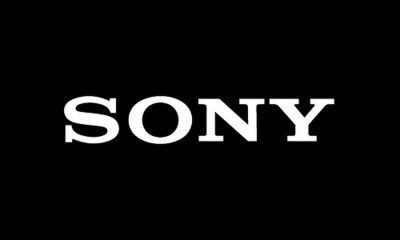


Sony Brand Story; From the production of rice cookers to becoming one of the most famous companies in the world
-




How did the people of the past imagine the future?
-




The story of the Yahoo brand, the story of the fall of a unicorn startup
-

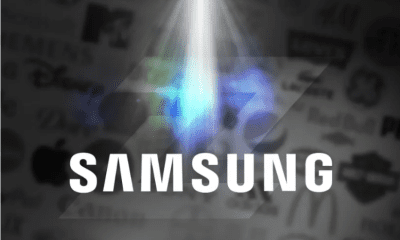


Samsung brand story; Full-view mirror of Korea’s commercial history
-




How to recognize the name of the font from its picture?
Technology
What is Kali Linux? Everything you need to know about this popular but mysterious distribution
Published
1 day agoon
15/09/2024

What is Kali Linux? Everything you need to know about this popular but mysterious distribution
In today’s technology era, as devices and tools become more advanced, their negative and destructive side also become more complex, and as a result, interaction with them requires more care. Currently, with the pervasiveness of the Internet the strong dependence of our daily lives on it, and the emergence of artificial intelligence, cyber threats have also increasingly spread, and the news of hacking various platforms is heard from left and right.
Considering the cyberization of part of people’s lives (entertainment, chat, and earning), the importance of strong cyber security measures cannot be ignored. Kali Linux or in English Kali Linux is a powerful and open-source Linux distribution that is specifically used for penetration testing and digital research and is considered one of the most important tools in the field of cyber security.
 Kali Linux 2024.3
Kali Linux 2024.3
Every techie has probably thought of installing Kali Linux, even via a virtual machine, to poke around and entertain their inner little scientist.
When users first encounter Kali tools, they see strange names such as BeFF Bettercap Hashcat Metasploit, or Nmap, which are almost difficult to guess their use from the name. Overall, Kali is a powerful distribution, and working with it requires a deep understanding of its tools.
What is Kali Linux?
Kali Linux, formerly known as BackTrack Linux, is a Debian-based Linux distribution developed by Offsec. This Linux distribution hosts hundreds of different tools used for penetration testing, reverse engineering, and vulnerability detection of networks and websites.

Due to the fact that Kali is developed based on Debian, it has high stability and security, and its Debian base allows it to benefit from vast software repositories and a similar package management system. In addition, if you are in the category of users who are already familiar with Debian Linux distributions such as Ubuntu, navigating Kali will not be difficult for you; But for users of other operating systems to enter the world of Linux, learning Kali takes more time.
Another important goal of Kali developers is to give the user unlimited freedom to have an open-source and ever-evolving platform and not just be limited to the tools available on the platform. Thus, even the most detailed parts of the software on Kali are open to optimization by the user.
Who uses Kali?
If you are imagining a sequence of Mr. You’re Robot, which depicts a hall full of professional hackers, and the hackers are sitting behind their systems in hoodies, you’re completely wrong. The use of Kali Linux does not require special clothing and there are professional and skilled experts who appear in their company and workplace every day and are responsible for simulating attacks on the network and discovering and fixing its vulnerabilities.
Other people for whom the use of Kali Linux is useful are instructors who plan to train the next generation of white hat hackers and ethical hackers, and Kali Linux is considered the best toolbox for training.
Key features of Kali Linux
Kali Linux has a variety of tools in various categories, including intelligence gathering tools, vulnerability analysis tools, wireless attacks, password mining, and social engineering tools. Do not forget that one of the main foundations of hacking and penetration is social engineering.
 Kali Linux tools menu
Kali Linux tools menu
In Kali Linux, you can use Nmap to scan a network and identify its open ports, Metasploit tool is also provided to exploit a vulnerability, and Wireshark should be used to go deep into the traffic of a network.
Tools like Wifite and Airgeddon are also pre-installed on the Kali platform to check the security of your Wi-Fi network. In fact, Wifite automates the process of cracking WiFi passwords, while Airgeddon provides a convenient environment for assessing wireless network security.
Regardless of the tools and programs that are available by default on the platform immediately after installation, users can install other programs they need by connecting to the Internet by learning how to install the program on Linux.
 Metasploit tool on Kali Linux
Metasploit tool on Kali Linux
The Kali developers have paid attention to every detail and even included a custom kernel kernel for packet injection, which plays a key role when working with Wi-Fi. In addition, all packages are signed with GNU Privacy Guard to assure the user about the security of the platform.
Features of Kali based on the introduction on the official website:
- It is free and will always be free.
- Git is open source.
- It conforms to the Filesystem Hierarchy Standard.
- It is compatible with a wide range of devices.
- It is developed in a safe environment.
- Supports multiple languages; Of course, the platform tools are in English.
- Compatible with ARMEL and ARMHF.
Why is Kali Linux not suitable for everyone?
Kali tools are very powerful and require the same amount of knowledge and experience to use them properly. For example, a normal user might want to scan his home Wi-Fi network and find possible vulnerabilities by installing Kali. But in this process, with Kali’s tools, he creates a problem that has serious consequences for him.
 Installing the program in Kali Linux through the terminal
Installing the program in Kali Linux through the terminal
Suppose you try to execute a script without sufficient knowledge and because Kali is connected to the Internet, this script affects the computer of a certain person or organization. Do not forget that Kali is not designed and optimized for the everyday use of ordinary people and common tasks such as web browsing, editing documents and watching movies.
Go to Ubuntu to satisfy your curiosity and experience the Linux environment
If you are just curious about working with Linux and getting to know the environment of Linux distributions, better options can be found compared to Kali. Usually, the most recommended migration from other platforms to Linux ends up with the Ubuntu distribution, which has a user-friendly interface and a huge support community and runs everyday processes like any other operating system.
Linux Mint is another option recommended for beginners, especially for users who are used to traditional desktops. On the other hand, Windows users usually associate more with Zorin OS. These distributions are all developed for everyday use and perform tasks such as web browsing, editing documents and even running games very well.
Getting started with Kali
Finally, if you decide to install Kali Linux, you should download it from the official Kali website. On the Kali website, you can see different versions of Kali for installation in different ways, and according to your conditions and desired installation method, you can download the desired version.
To install Linux distributions, it should be noted that it is possible to install Linux on Flash or that the user can install the desired distribution on the virtual machine. Installing Kali on a virtual machine has the advantage that all events are kept in isolation and no damage is done to the user’s main operating system.
The Kali Linux distribution is considered the most popular platform for hackers and is designed for specific purposes where everyday use is not among its goals; Therefore, it is not necessary to install it for specialized work and of course to meet the needs of curiosity, but for normal use it is recommended to go for other distributions of Linux.
Dear Zomit users, what is your opinion about the user experience with Kali Linux? Do you recommend installing it?
fashion
Sony Brand Story; From the production of rice cookers to becoming one of the most famous companies in the world
Published
1 day agoon
15/09/2024

Noun: Someone who assists () a goal.
Sony brand story; From the production of rice cookers to becoming one of the most famous companies in the world
Sony is a Japanese multinational company headquartered in Minato, Tokyo. This company provides electrical services, gaming, entertainment, and financial services.
Sony is known as one of the pioneers in the production of electrical products and in recent years it has improved its position among the top companies in the world. Sony consists of many subsidiaries, the most famous of which are Sony Pictures, Sony Music, Sony Mobile, Sony Entertainment, and Financial Holding.
The story of the formation of the Sony brand
Masaru Ibuka returned to Tokyo from World War II in September 1945 to start a new job in the Japanese capital. He set up his workshop in an old, war-torn building with only eight employees. Their initial office walls were full of cracks and had no windows, but over time as their business progressed, the office building also improved.
In October of that year, Ibuka and his group launched a new company called Tokyo Tsushin Kogi, or Tokyo Institute of Communications Research. At that time, everyone was eager to work in the new company and wanted to use their engineering knowledge to rebuild Japan. However, no one knew where to start. Most of the employees were paid from Ibuka’s small savings and they had to work hard to survive.
The story of the formation of Sony goes back to 1945; When Masaru Ibuka returned from World War II
At that time and during the Second World War, people were thirsty to hear the news of the day. As a result, they came up with an interesting idea that changed the fate of the company forever. Most of the radios at that time were either destroyed by the war or could not receive radio waves due to police interference.
The Ibuka company repaired broken radios and also made it possible to receive waves using a series of converters. It didn’t take long for this model of radio to gain many fans among people.
Their business was in the center of attention and for this reason one of the Japanese newspapers published an article about them. This article not only got them more customers but also brought Ibuka’s old friend, Akio Morita, closer to him.
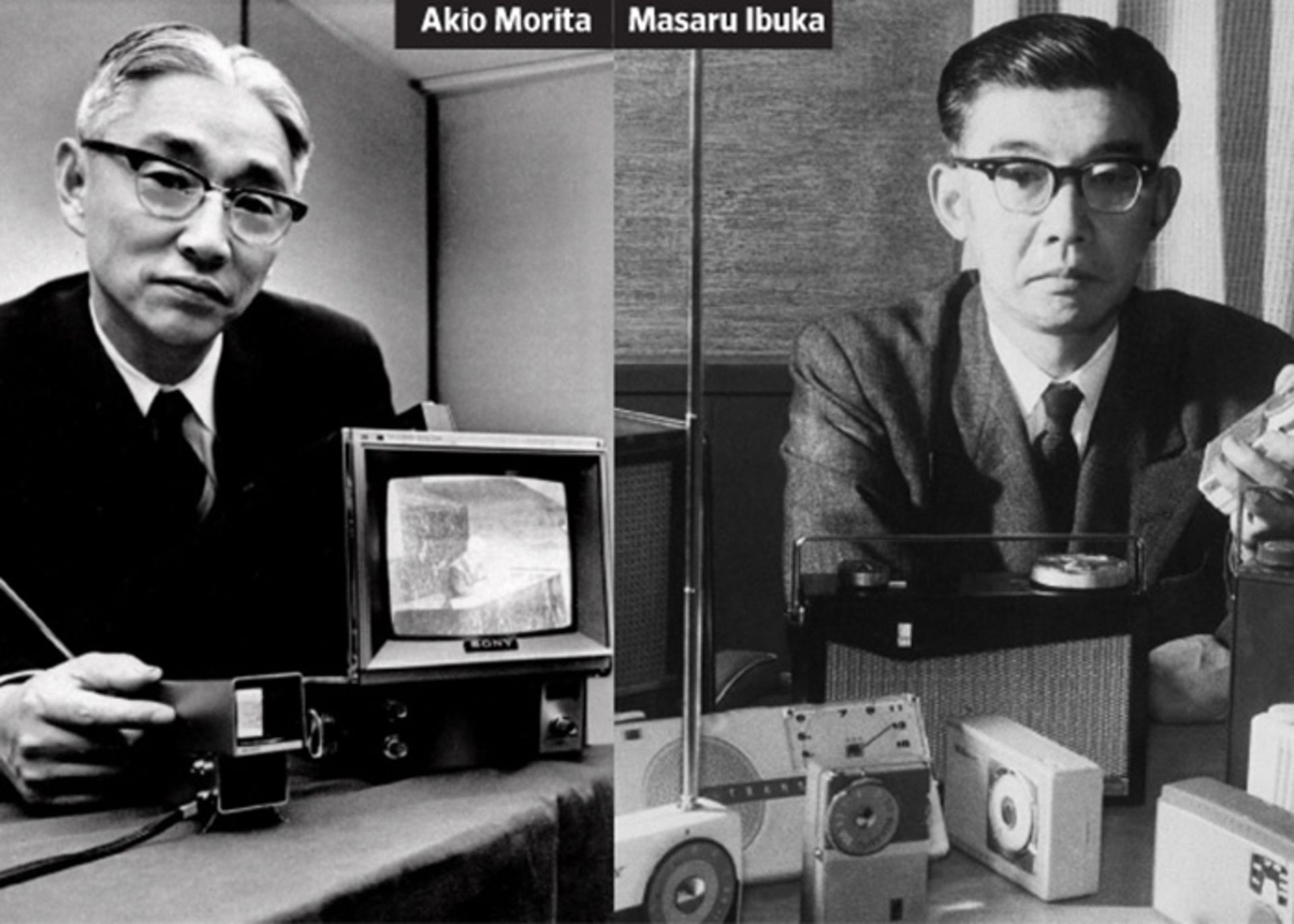
Ibuka and Morita, the founders of Sony Corporation, first met on a research committee studying new types of war weapons.
After some time passed, despite the big age difference, a deep friendship between Ibuka and Morita was formed. After the end of the war, Morita returned to his hometown and the communication between them was cut off. Until one day he read his friend’s name in a newspaper article and called Ibuka. Ibuka also asked him to get to Tokyo as soon as possible to start working with him again.
Sony’s brand name was originally supposed to be TTK or Totsuko
They were looking for a new name to advertise their company globally. Their intention was to choose the abbreviation of the company’s name, TTK, for advertising, but this name was already used. The word Totsuko was also another suggested name. But during his trip to America, Morita realized that it is difficult for Americans to pronounce this name.
They finally chose the name Sony from the combination of 2 words Sonus meaning sound and Sonny meaning young boy. Their purpose in choosing this name was to pronounce it in the same way in all languages of the world.
The company’s first product was a rice cooker, which, contrary to expectations, failed to meet expectations and failed. They did not get discouraged after their first failure and devoted more money to research. They focused on developing products that would benefit the Japanese people.
Sony; The first brand
During 77 years of operation, Sony has been able to launch the first product in many markets of the world. From Japan’s first tape recorder to Japan’s first transistor radio and other products.
Tape recorder

In 1950, the first Japanese tape recorder was made from its American model. This device was also not well received until Sony released a translated version of 999 Ways to Use the tape recorder.
After people became familiar with the product’s uses, the purchase request increased and the Sony tape recorder sold well. The demand for this product increased so much that the company had to expand its facilities to produce orders.
Transistor radio

Japan’s first transistor radio was introduced in 1955 by Sony.
Portable TV
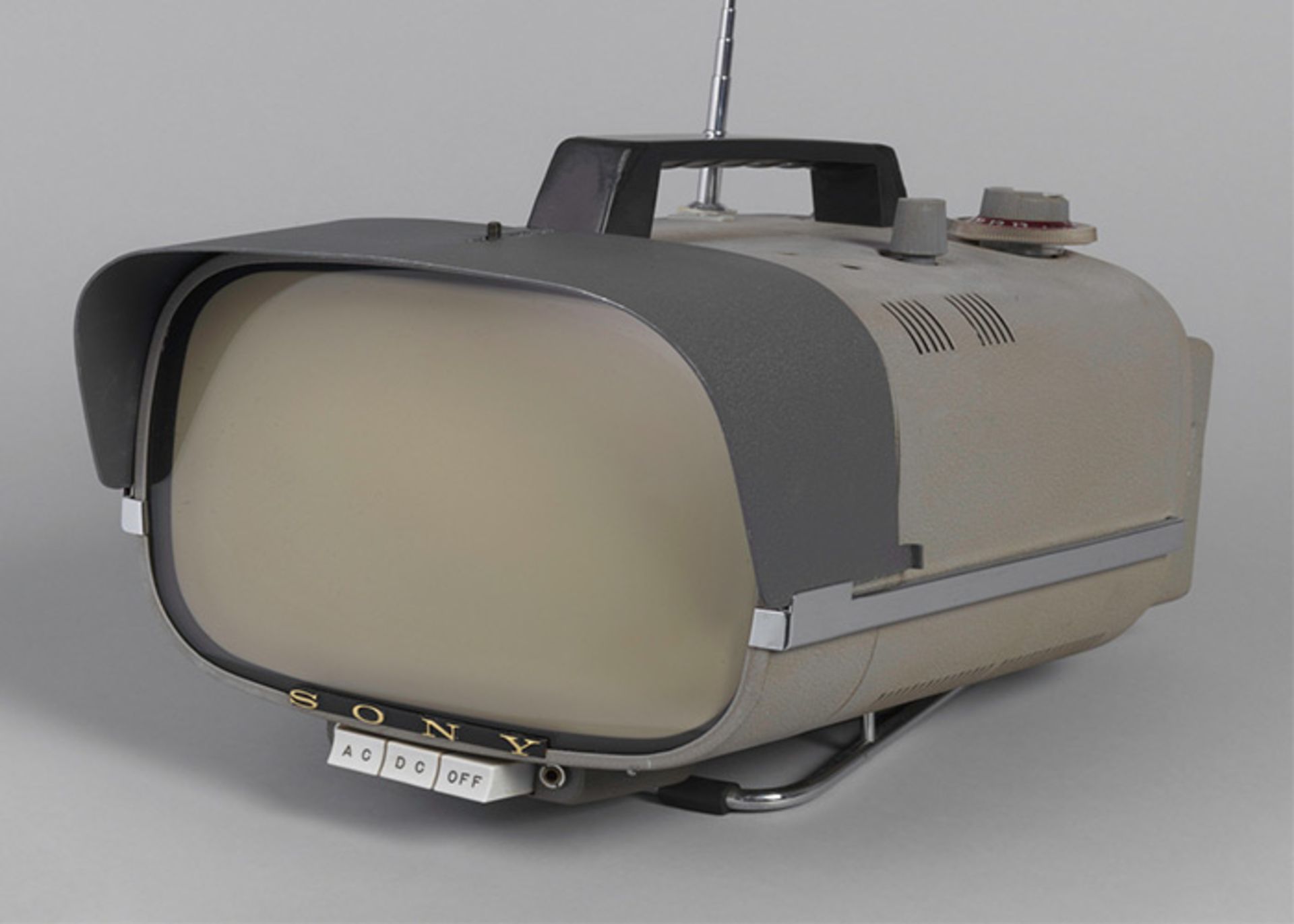
In 1960, Sony released the world’s first portable transistor TV. Sony used radio technology to produce this device.
The televisions of that time were big and in every house, a specific room was reserved for them. But these products brought a new definition of personal televisions to the market.
Video tape player
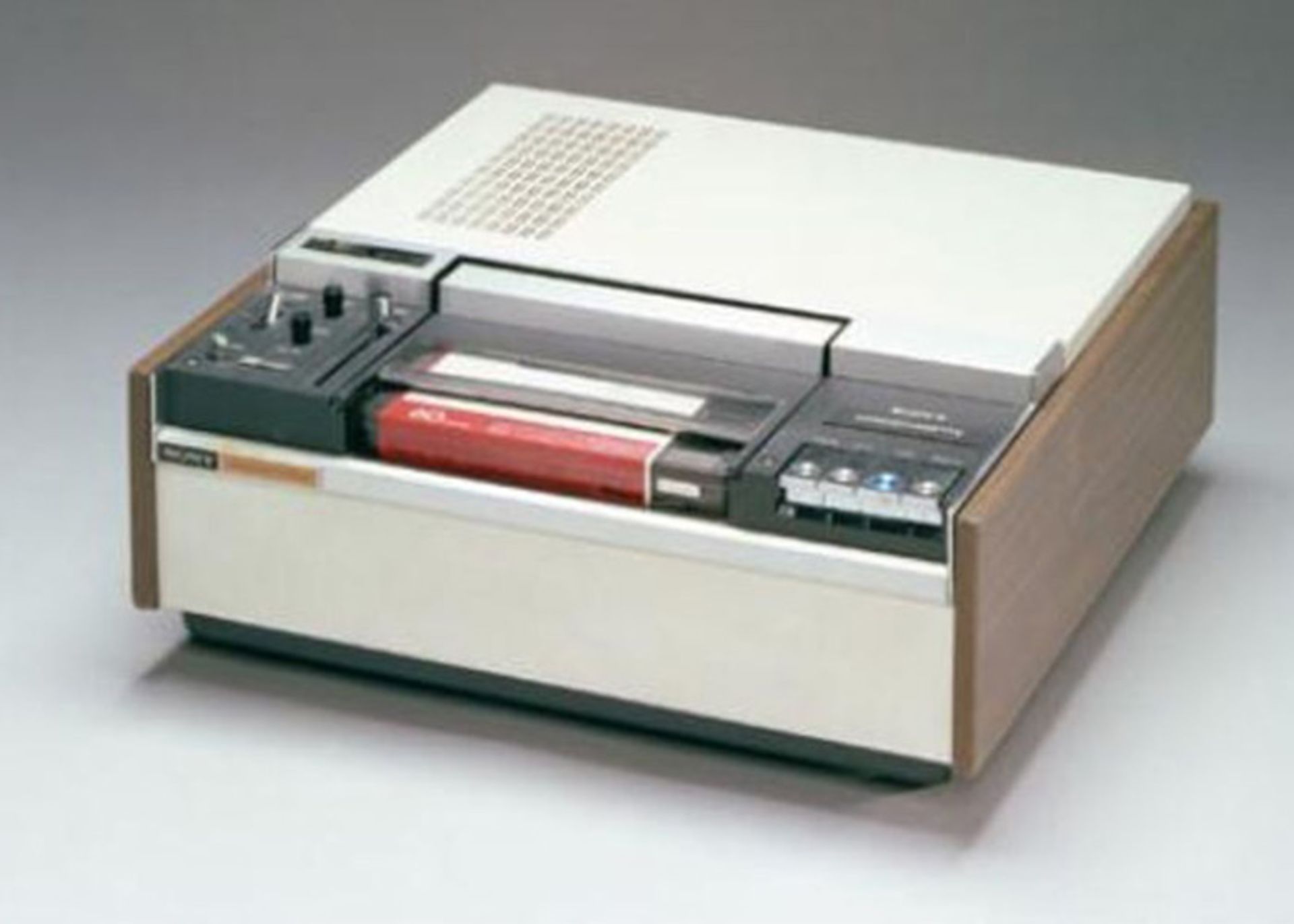
In 1971, Sony unveiled another product. This player was able to show videotapes in color inside the TV.
Masaru Ibuka retired in 1976 and was succeeded by Akio Morita as CEO.
The first generation Walkman

In 1979, Sony launched the first generation of Walkmans. These devices were portable and customers could listen to their favorite cassettes anywhere.
Many employees of the company believed that this device could not become popular among people without the ability to record sound. But contrary to their belief, this device introduced a new and successful lifestyle among people and achieved remarkable success.
The first CD player
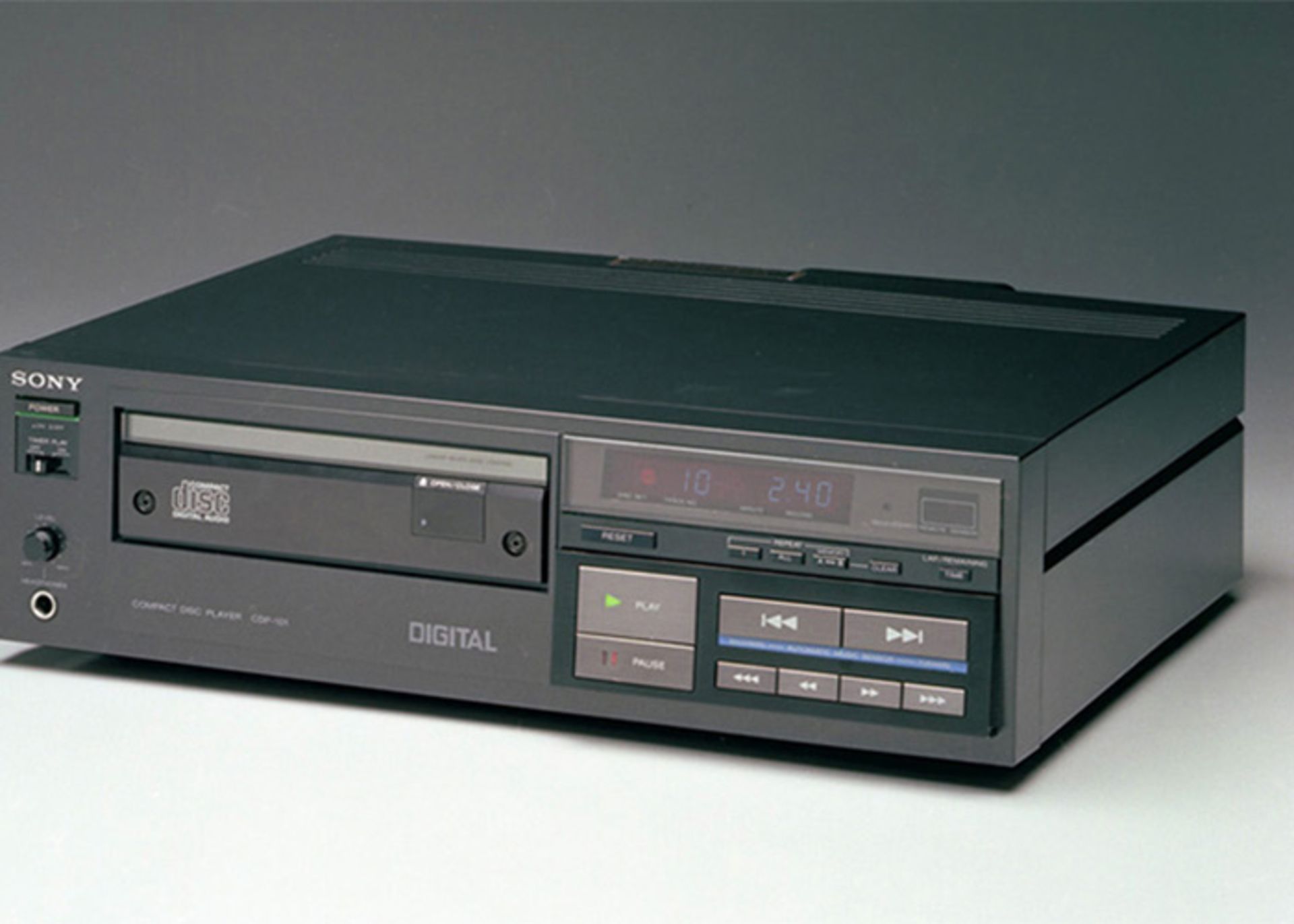
The world’s first CD player was launched in 1982 by Sony.
One of Sony’s senior managers, Norio Oga, was elected as the company’s CEO in 1989. Sony bought Columbia Pictures in the same year. This action was considered the biggest purchase of a Japanese company at that time.
PlayStation
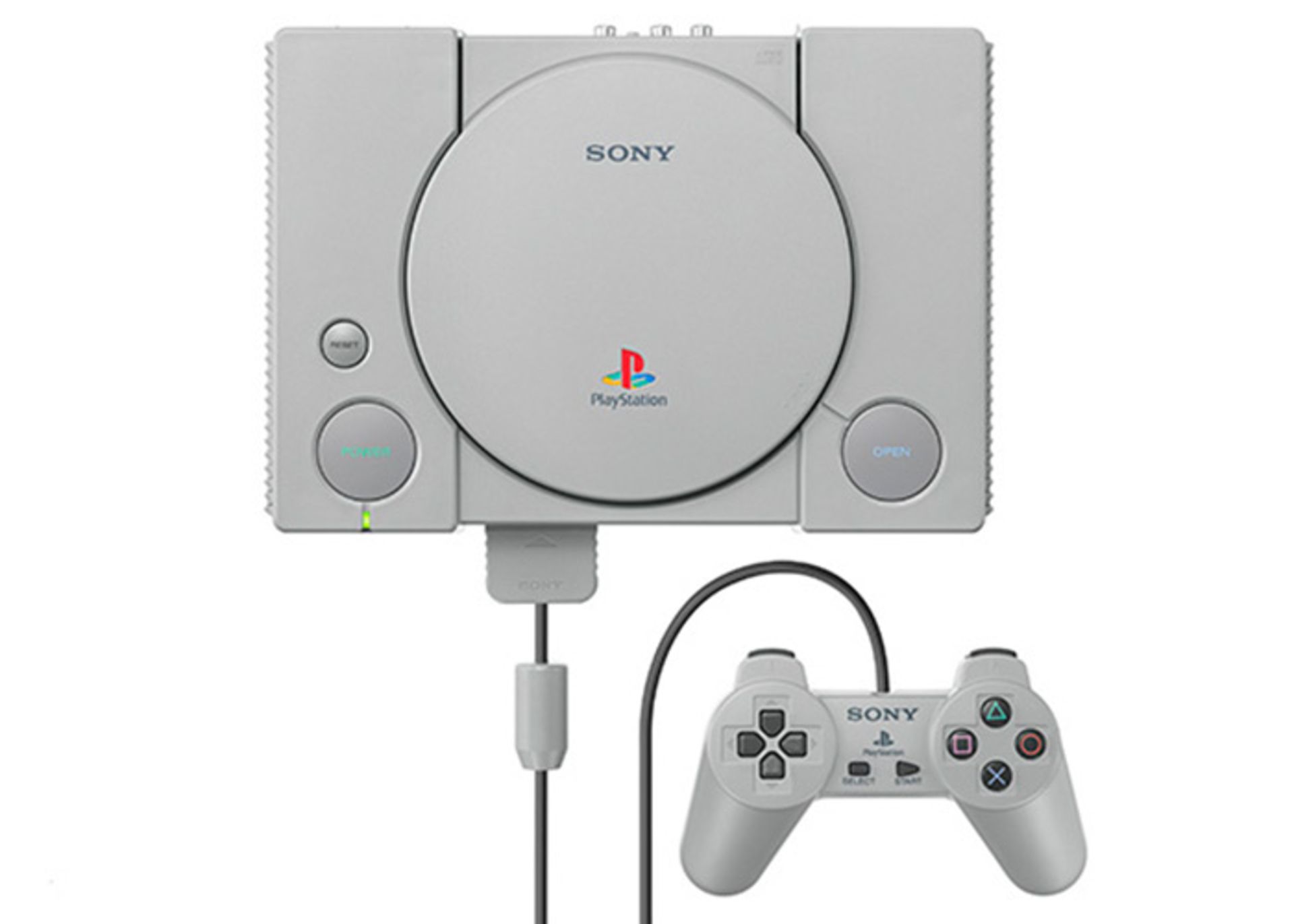
PlayStation is another important product of Sony. This product was sold in the Japanese market in 1994 and entered America and Europe in 1995.
PlayStation became so popular among people that its sales reached 10 million units by the end of 1996, and in 1998, about 50 million of this console had been sold. The production of new models of this product continues and today PlayStation 5 is considered the newest Sony console.
Digital camera

The first digital camera was launched by Sony in 1995. This device was very well built and recorded high-quality videos.
Sony Mobile
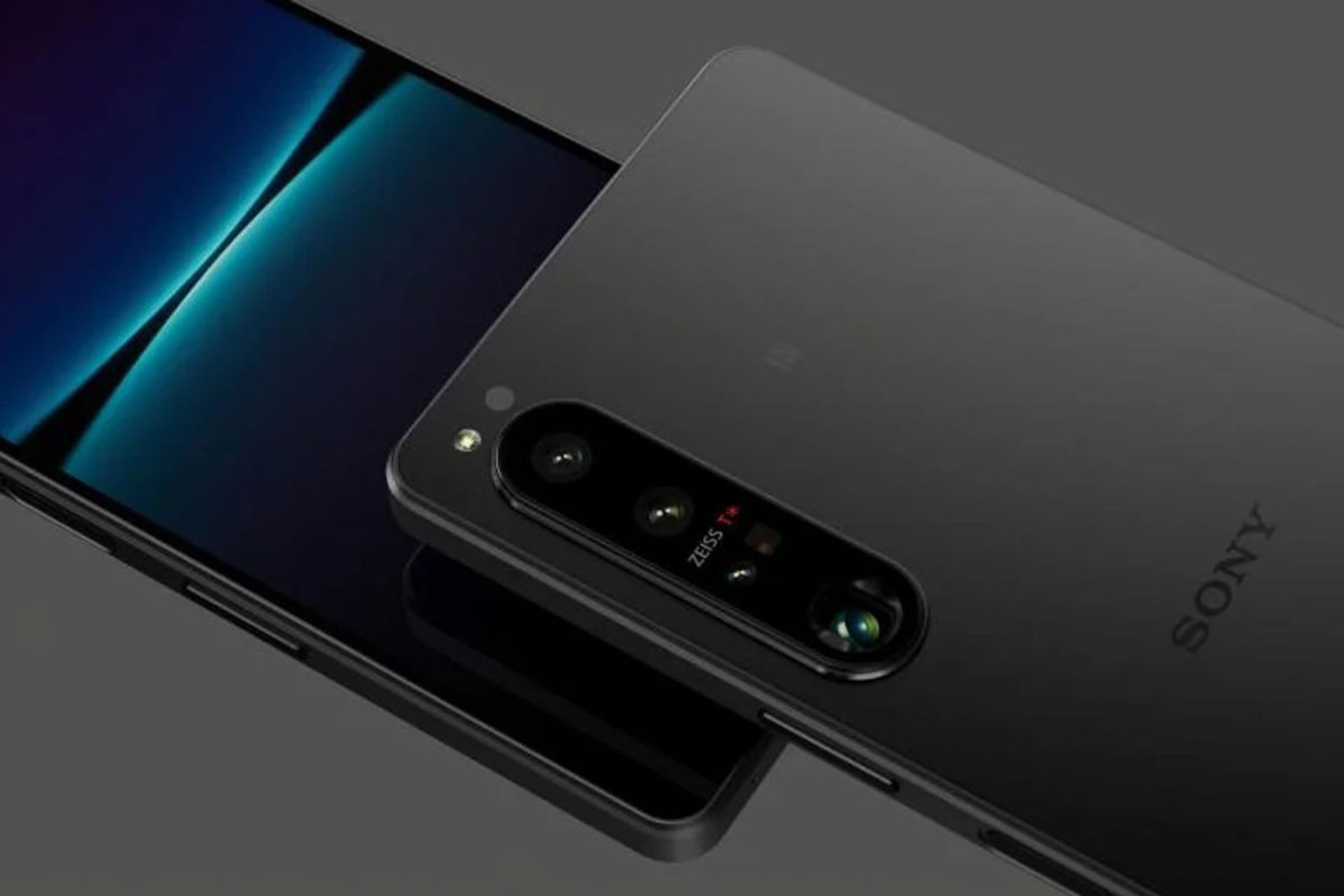
Sony Mobile Company started working in 2001 in cooperation with Ericsson. The company’s products were first marketed under the name of Sony Ericsson until Sony bought Ericsson’s shares in 2012. Since then, the phones of this company have entered the market under the name of Sony.
In 2012, Sony was able to win the title of the fourth mobile phone manufacturer. Xperia series mobile phones are the current flagships of this company. The Xperia brand doesn’t sell much at the moment, but Sony continues to produce products.
Vaio laptop

The first generation of Vaio laptops was launched in 1997. These laptops had a slim body and introduced a new concept of personal computers to the world.
Personal life of Masaru Ibuka

Masaru Ibuka was born on April 11, 1908 in Nikko, Japan. He graduated from the university in 1933 and worked in a film production company. Ibuka joined the Navy during World War II and was a member of the investigative committee; But after some time in 1945, he left the war to start his own radio repair workshop in Tokyo.
At that time, people followed the news of the world through the radio. As a result, starting a radio-related business was a good idea for a company. Ibuka and Akio founded Sony in 1946. Ibuka used transistors to make his company’s products. Therefore, Sony was introduced to the world as one of the first companies to use this technology for non-combat purposes.
Ibuka was a member of the Navy during World War II
In 1976, Ibuka was awarded an honorary doctorate from the University of Tokyo. He received two other honorary doctorate degrees in 1979 and 1994 from Tokyo and American universities.
Ibuka published a book titled “Kindergarten is Too Late” in 1971. In this book, he claimed that the most important time for human learning is from birth to three years old. As a result, he has suggested ways to teach skills to children at this time.
Ibuka was the leader of Sony until 1976 and then he retired; But even after that, he had a close relationship with company managers and guided them. He died in 1997 at the age of 89 due to heart failure.
Personal life of Akio Morita
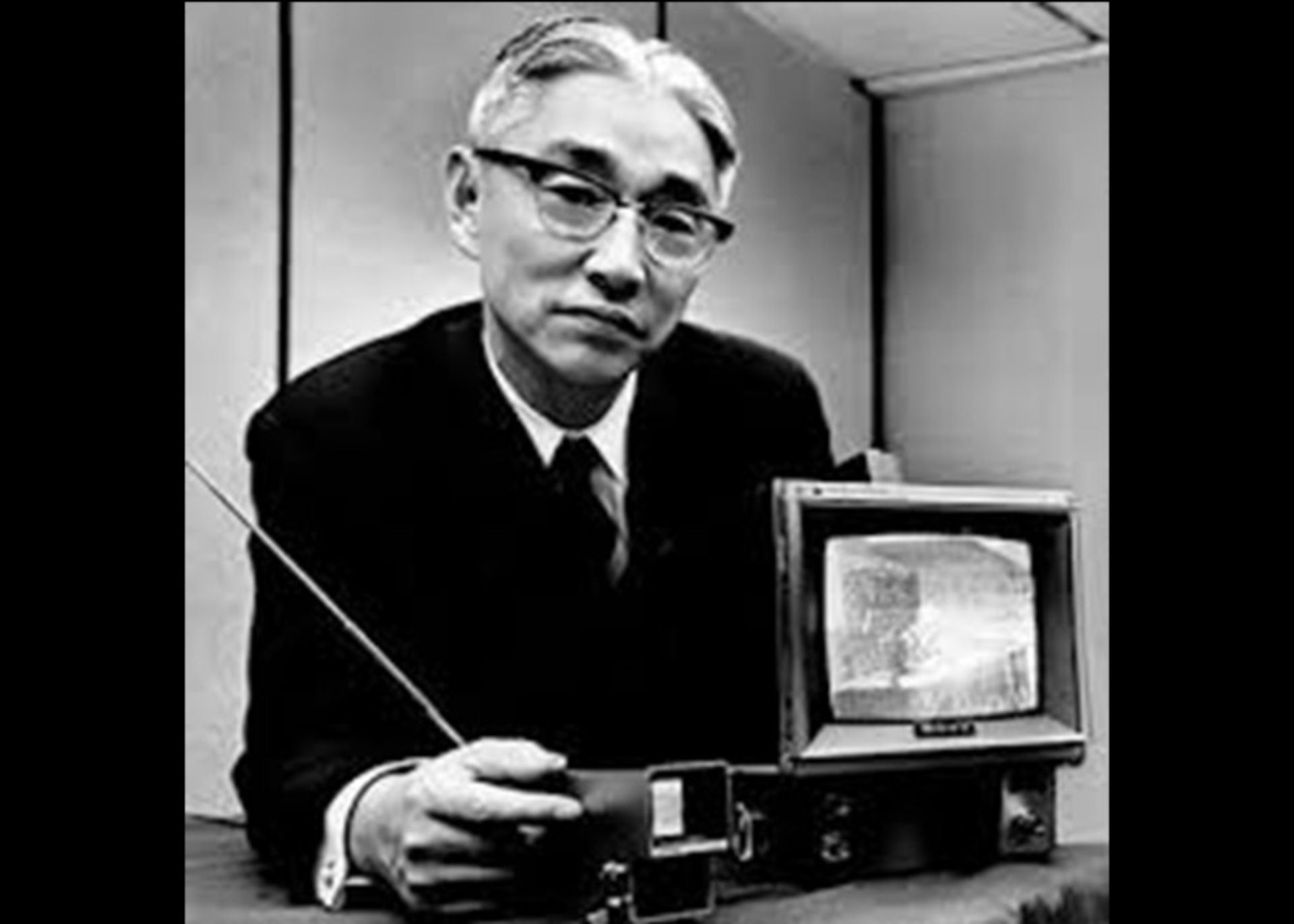
Akio Morita was born on January 26, 1921 in Japan. He was the eldest of his four siblings. As a result, his father trained him to manage the family business.
Akio was very interested in mathematics and physics and graduated from university with a degree in physics. During World War II, he became a member of the Japanese Army’s Research Committee, and while serving, met his future business partner, Masaru Ibuka.
Morita was a huge fan of all Sony products and worked hard to promote them. For example, the size of their first production radios was slightly larger than the standard shirt pocket size. Because they wanted to market their products as pocket radios, Morita made shirts for their employees with larger pockets to show customers that these radios were pocket radios.
Sony established its first branch in America in 1960. Sony was the first Japanese company to enter the US stock market. In 1994, Morita suffered a stroke while playing tennis and resigned from the chairmanship of Sony. He finally died of pneumonia in 1999 at the age of 78.
Sony failures
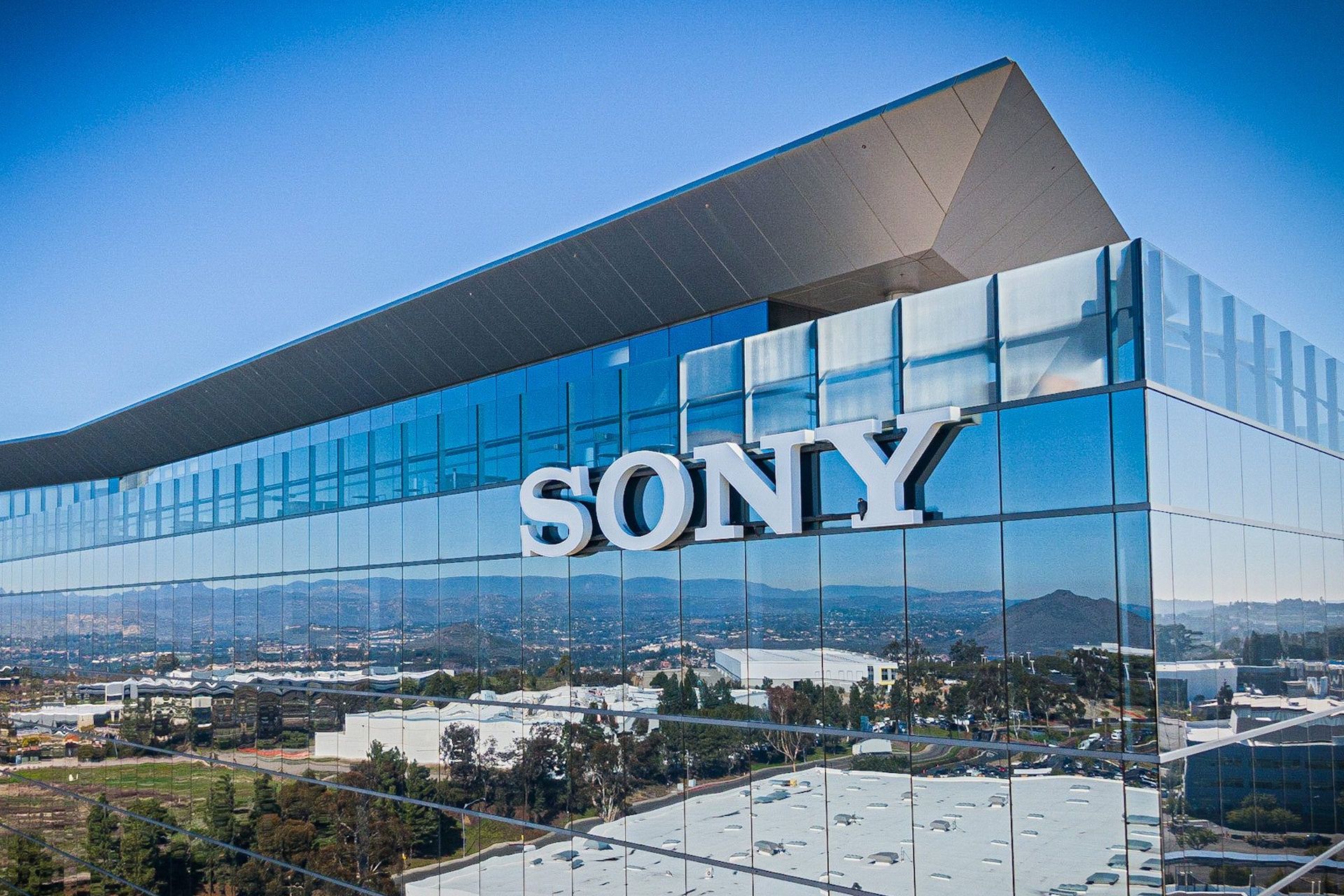
Since its establishment in 1964, Sony has produced successful and innovative products. Many of these products were entering the market for the first time, and as a result, they introduced a new concept of technology to the world; But no success story is without failures.
Sony Aibo

Sony robots were launched in 1999. These robots were in the form of cute dogs and had the power to learn. These robots could show emotions such as happiness, sadness, anger, surprise, fear and disinterest.
Sony robots were sold at a price of $2,500 and were very popular among their owners. But its high price prevented it from increasing its popularity and eventually, Sony stopped production.
Vaio music device
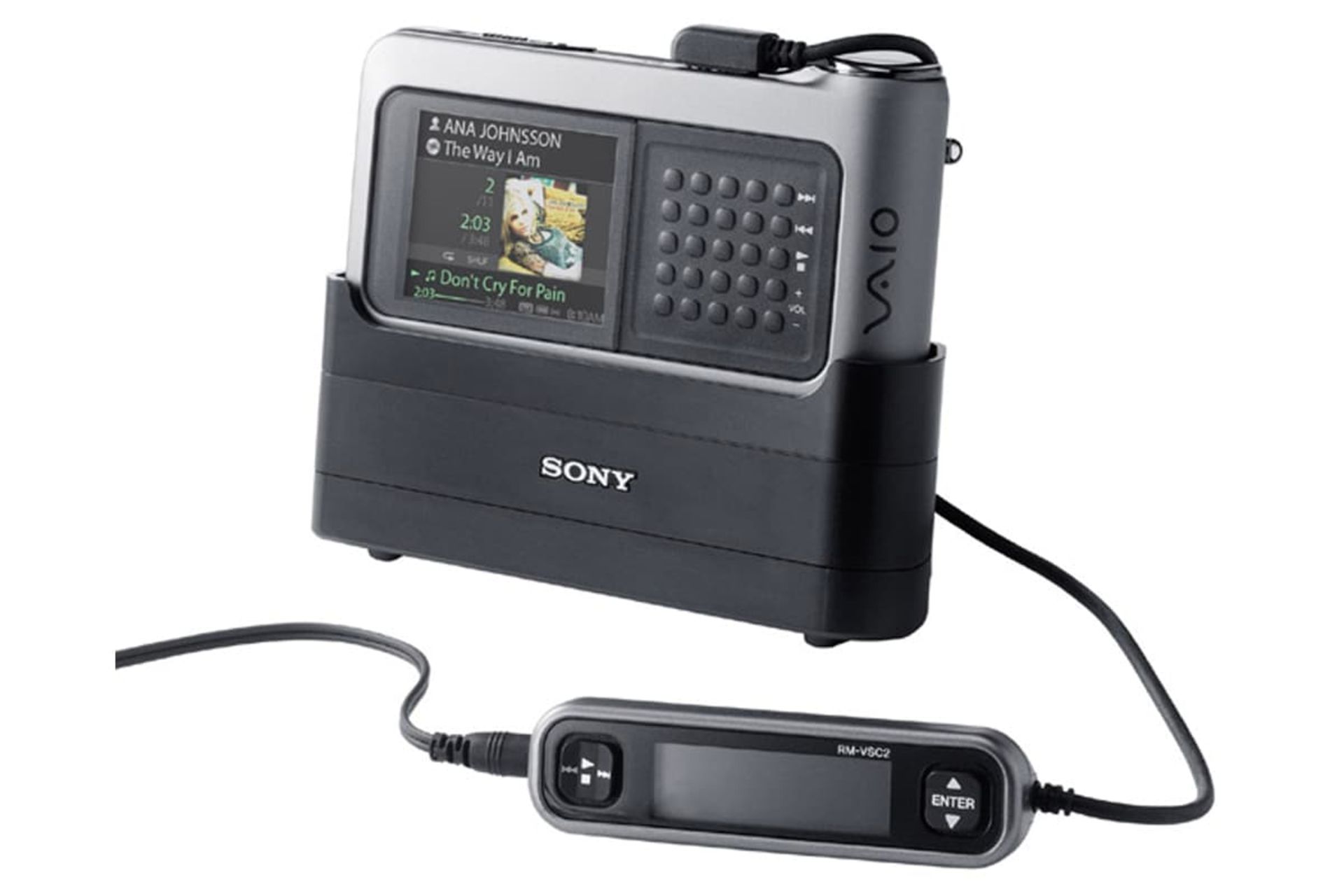
In 1979, Sony introduced a new concept of portability to the market by presenting its Walkman. The company had been Apple’s fierce competitor in digital music for two years, but its first product did not perform well.
The biggest mistake of the company was the dependence of files on the ATRACT format. Files with this format could only be used in Sony minidiscs. The ability to share files was the first word in digital music in 2000, and all files were released in MP3 format. As a result, this issue became a big challenge for Sony.
Sony e-Villa
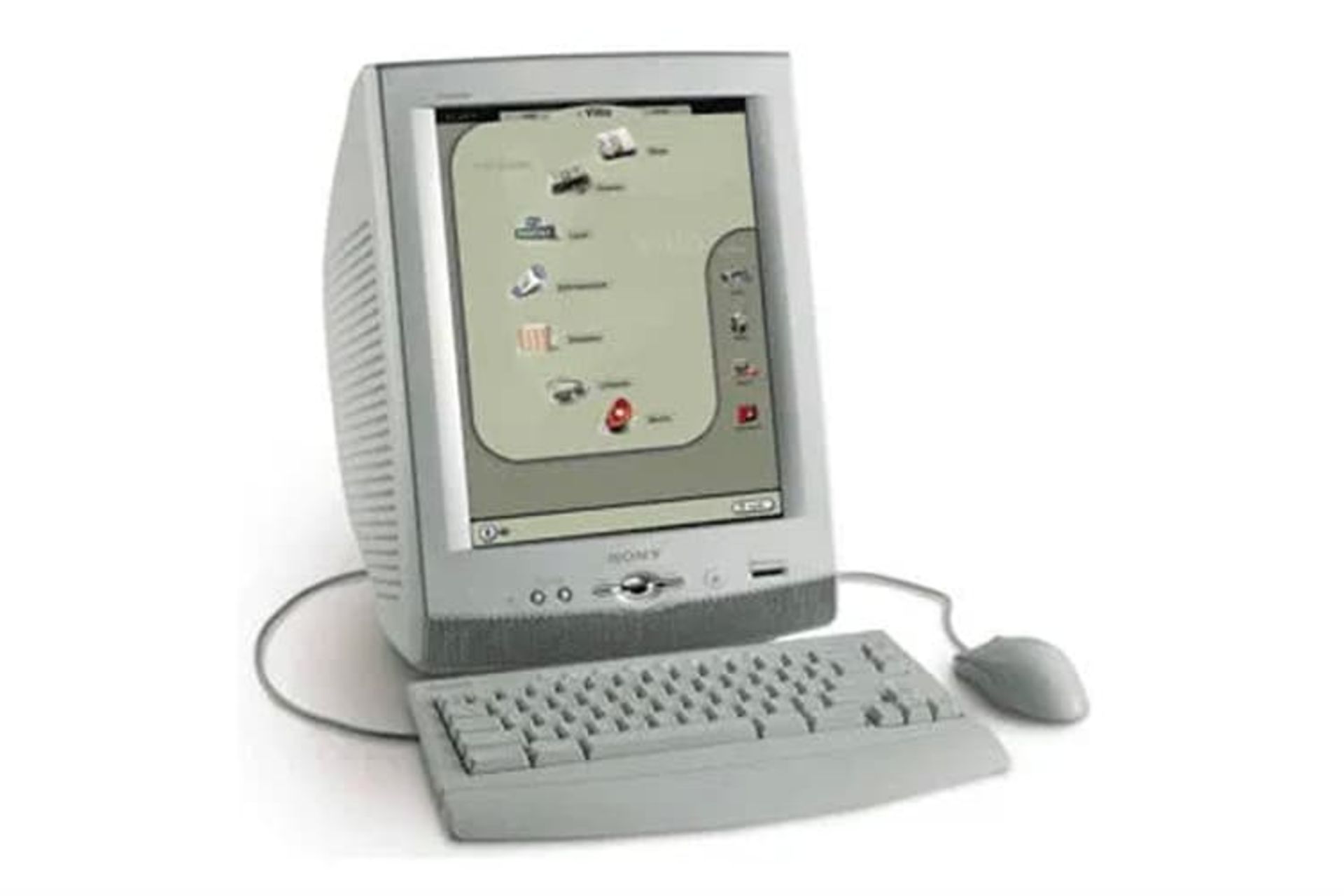
In 2001, many companies were offering Internet home appliances, including dedicated terminals for accessing the Internet and web browsers. Sony e-Villa was also a product that was launched with the same purpose.
The e-villa had a 15-inch monitor and a 56 kbps dial-up modem. e-Villa was designed to have access to email services and websites. At that time, there was a lot of competition between these devices and people preferred to use devices with Windows XP. As a result, Sony stopped the production of these products after three months.
Sony Airboard
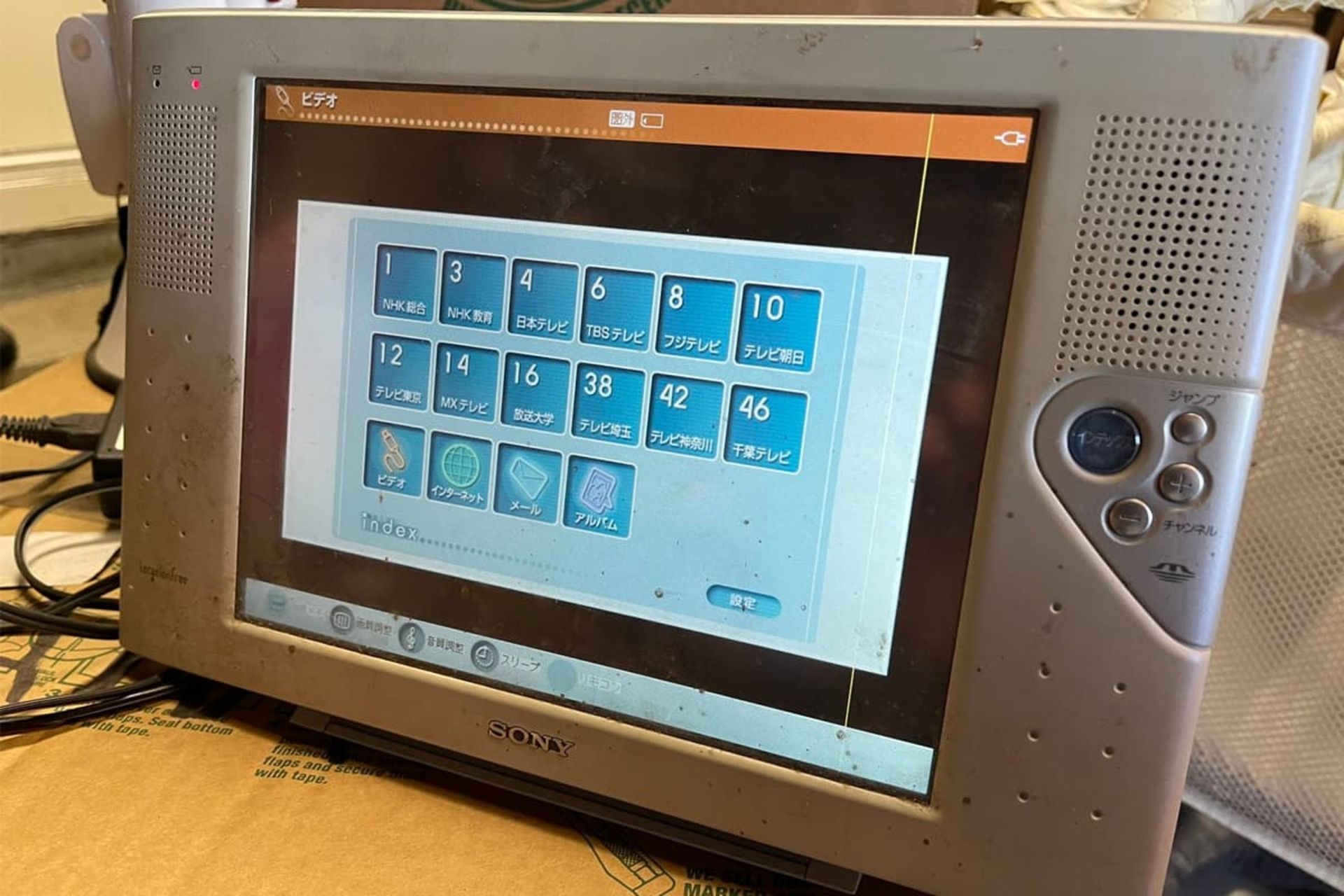
10 years before people became interested in watching videos on tablets, Sony launched a device called Airboard. The tablets of this family were 10 inches and had the possibility to connect to Wi-Fi and broadcast TV channels.
Using the picture-in-picture feature, users could search the Internet and watch TV. This device never caught on because people thought it was just a portable and expensive TV. Therefore, its production was stopped before entering the American market.
Sony PSX
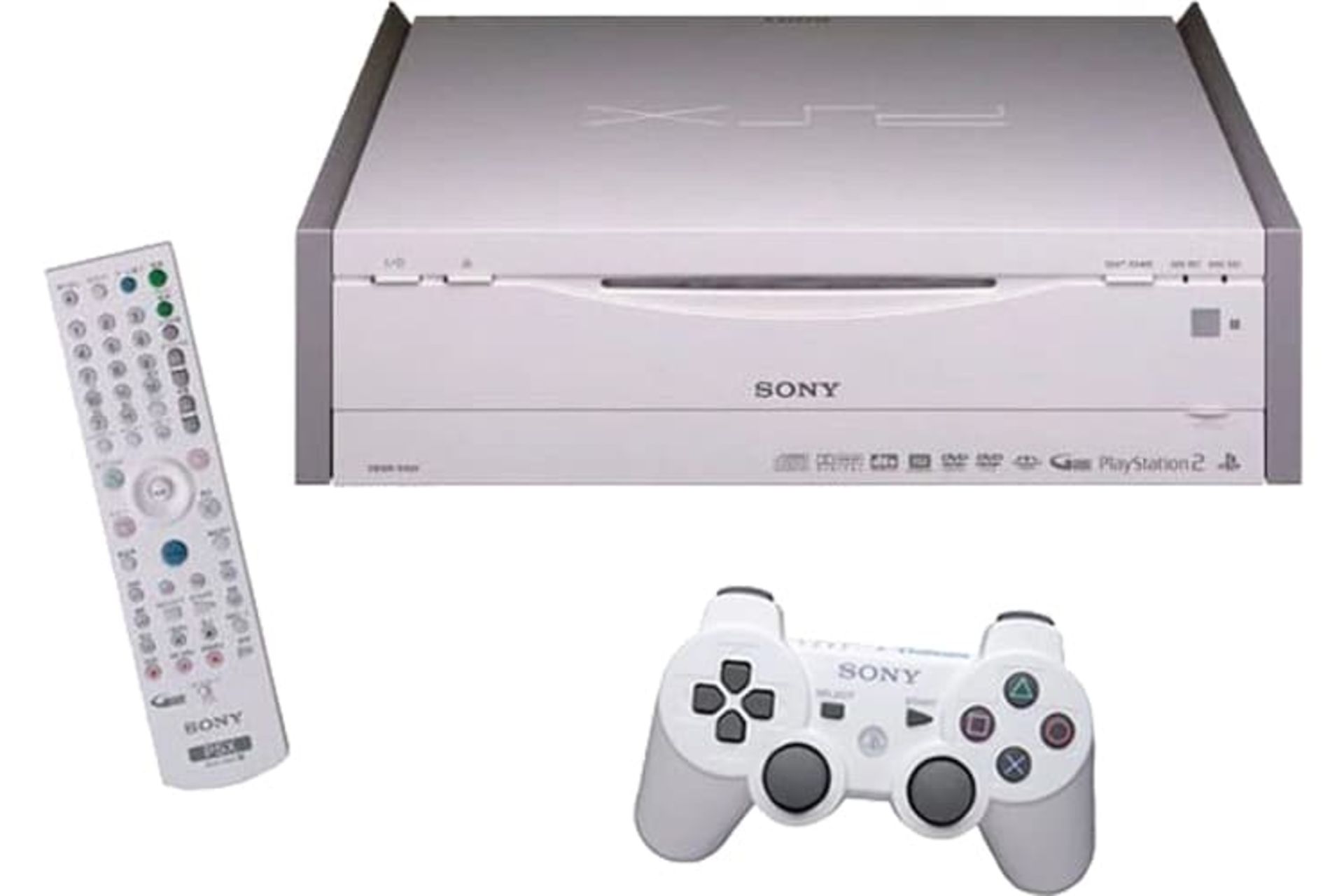
In 2003, Sony combined its two products, the PlayStation 2 and the video recorder, and marketed it as a single product. Using this product, customers could record the TV show on the storage memory or DVD at the same time as the game experience.
But the PSX, which was released only in Japan, was much larger and heavier than the PlayStation. Although this product did not have a high price, it could never attract many customers.
The current state of the Sony brand

Sony is one of the largest Japanese companies by revenue. The company reached the peak of profitability in the 1990s and 2000s due to the launch of its PlayStations, but faced financial problems in the late 2000s.
Read more: Samsung brand story; Full-view mirror of Korea’s commercial history
The global financial crisis, increased competition with PlayStation, and the earthquake in Japan in 2011 went hand in hand with Sony experiencing major failures for three years.
Due to the negative effects caused by natural disasters and exchange rates, the Times magazine called Sony a lack of flexibility and inability to measure the economy, but Sony was able to overcome all the crises in all these years by using innovation and became one of the top companies in the world. become in the television industry.
Sony’s current slogan is Be Moved, and the company aims to emotionally excite its customers with every product it offers.
Sony was able to pocket an operating profit of 1.21 trillion yen (about 8.9 billion dollars) in fiscal year 2022, which is a new record. Sony’s revenue in the final quarter of last year grew by 35 percent to about 3.06 trillion yen ($22.5 billion).


Adjective: The greatest; the best.
Pronoun: The greater part of a group, especially a group of people.
Noun: The greatest amount.
Noun: The greater part.
Noun: A record-setting amount.
How did the people of the past imagine the future?
How can you explain to people in the 1900s that a robot can sweep floors and carpets without any intervention by drawing a map of your house without sounding crazy?
To people of the last century, our technology today seems like magic; But that doesn’t mean they didn’t fantasize about what the future would be like. Many inventors and artists have depicted their own predictions of future technology. Let’s look at these paintings and then comment on their scope.
 Bird postman – 1892
Bird postman – 1892
The potential of human flight was one of the concerns of futurists. It is true that aviation has revolutionized our world, but the type of flying equipment and “flying cars” that captured the imagination a century ago will remain for the future.
One of the important innovations that the minds of the ancients often did not imagine is the Internet and modern wireless communications. In today’s world, the flying postman pictured here would probably be out of a job thanks to plain old email.
 Electric floor washer (electric scrubber) – 1899 | The vacuum cleaner was invented just two years after this image was made.
Electric floor washer (electric scrubber) – 1899 | The vacuum cleaner was invented just two years after this image was made.
The idea of a robot vacuum cleaner, now a reality in millions of homes, was apparently beyond imagination in the late 19th century.
 Machine learning-1901
Machine learning-1901
According to this prediction, teaching was supposed to become a very easy job by the year 2000. The principal simply feeds the history books into the machine, while an assistant (or perhaps a student being punished?) turns the handle and somehow wires the contents of the books to the headsets the students are wearing, and from there into their minds. sends Do you understand the necessity of the presence of the school principal in this process?
 Phone with photo – 1918
Phone with photo – 1918
The arrival of video-calling technology was predicted more than a century ago. The Electrical Experimenter magazine wrote in 1918: “Many inventors have attempted to invent a device or machine by which one person can see another while talking on the telephone.” According to the author of the magazine, such a device, which should naturally be called a “telephot”, will be invented sooner or later, because “everyone would like to have such a device.”
 Video call – 1942
Video call – 1942
Another article in the magazine Practical Electrics in 1942 predicted a similar device with moving pictures so interesting it is admirable.
 wheel of destruction
wheel of destruction
During World War I, specialized technology magazines were full of ideas that were hoped to bring an end to the long conflict. One of these inventions was the gyro-electric destroyer. “This 45-foot monster is steered by a large gyroscope wheel,” Electrical Experimenter magazine reported. “The destroyer travels at a speed of 40 to 60 miles per hour and because of its large diameter it easily rolls over trenches and other obstacles.”

The vision envisions a robot dog that readers can build for themselves; A wheeled device that operates with batteries and follows its owner’s metal cane through a magnet. It may have a cute face but don’t expect this dog to roll over, play, or react if something bad happens to you.
The idea of artificial pets doesn’t seem so strange nowadays. This is a concept that exists mostly in the field of cyberspace, exemplified by digital home assistants and artificial intelligence-based video game characters.
 Climate control – 1954
Climate control – 1954
The dramatic image above shows how future humans will be able to control the weather. This article describes an airplane that is dispatched to disperse a cloud that threatens to form a tornado. “In the age of the hydrogen bomb and supersonic flight, it’s possible that science will find ways not only to destroy tornadoes and hurricanes but also to influence weather conditions in ways that will boggle the imagination,” the magazine reports.
Read more: The future of generative artificial intelligence from its own language
 Food planning by computer – 1967
Food planning by computer – 1967
In 1967, Philco-Ford, a maker of electrical goods, produced a short film called 1999AD, showing how its future products might transform ordinary homes. The family in the film owns a space-age car, a large wall-filling television, and a large home computer that helps the family (specifically the mother) plan their meals. In the film, we see the father of the family using the computer to check the invoice for the clothes he bought online.


Do animals have an understanding of the concept of death?


What is Kali Linux? Everything you need to know about this popular but mysterious distribution


Sony Brand Story; From the production of rice cookers to becoming one of the most famous companies in the world


How did the people of the past imagine the future?


Mammoth and dodo return to nature


Canopus; What do we know about the second brightest star in the sky?


How to use iMessage on Android?


Can humans endure the psychological torment of living on Mars?


Xiaomi Glorimi M2 Max watch review; Alternative economic option for iPhone owners


Artificial intelligence problems; Frauds based on artificial intelligence and methods to deal with them
Popular
-



 Technology1 year ago
Technology1 year agoWho has checked our Whatsapp profile viewed my Whatsapp August 2023
-



 Technology1 year ago
Technology1 year agoSecond WhatsApp , how to install and download dual WhatsApp August 2023
-



 Technology1 year ago
Technology1 year agoHow to use ChatGPT on Android and iOS
-



 AI2 years ago
AI2 years agoUber replaces human drivers with robots
-



 Technology1 year ago
Technology1 year agoThe best Android tablets 2023, buying guide
-



 Technology1 year ago
Technology1 year agoThe best photography cameras 2023, buying guide and price
-



 Humans2 years ago
Humans2 years agoCell Rover analyzes the inside of cells without destroying them
-



 Technology1 year ago
Technology1 year agoHow to prevent automatic download of applications on Samsung phones


